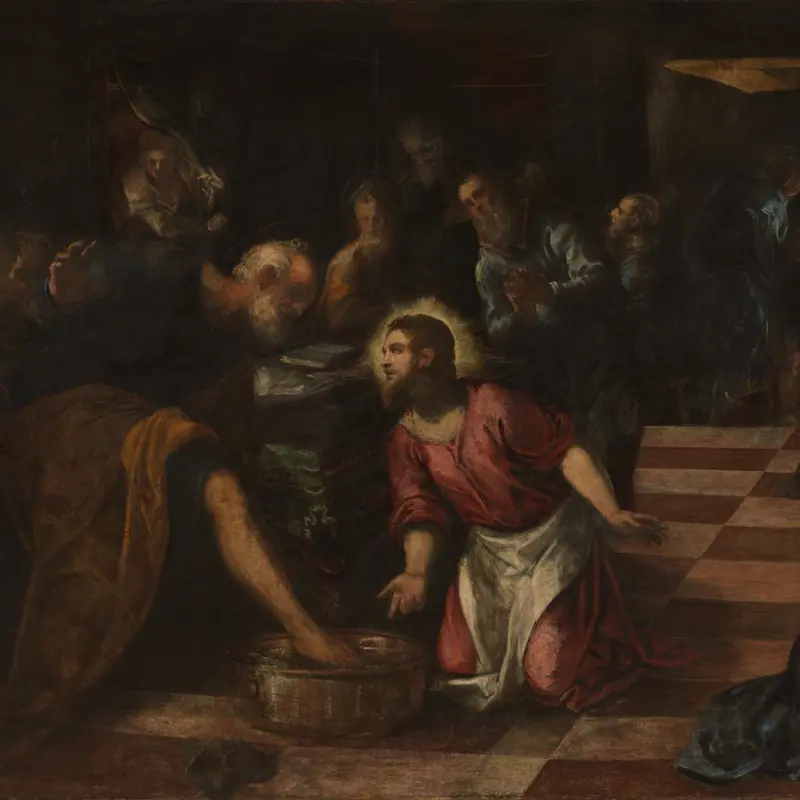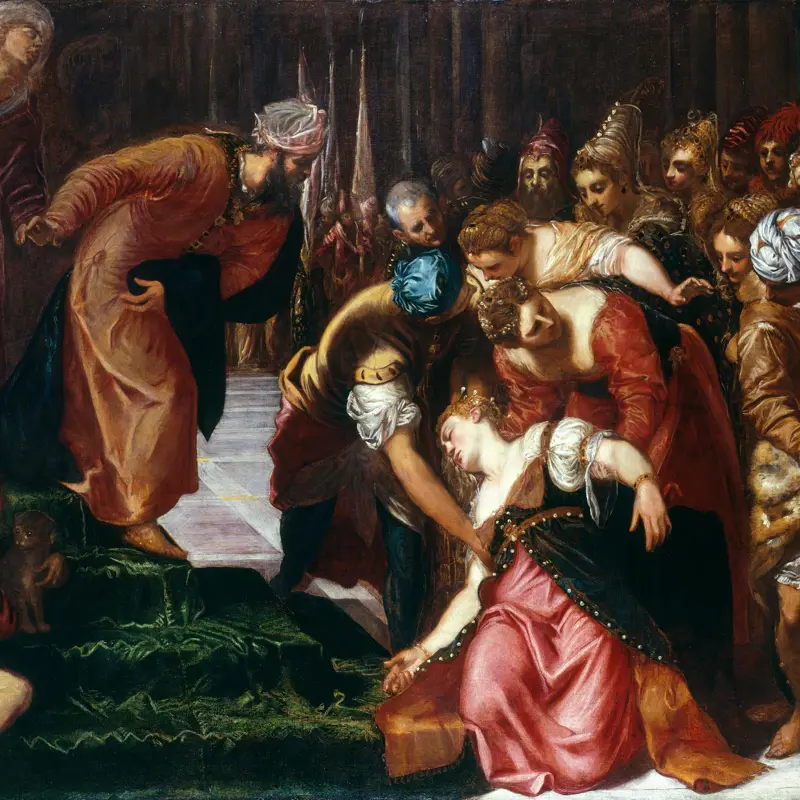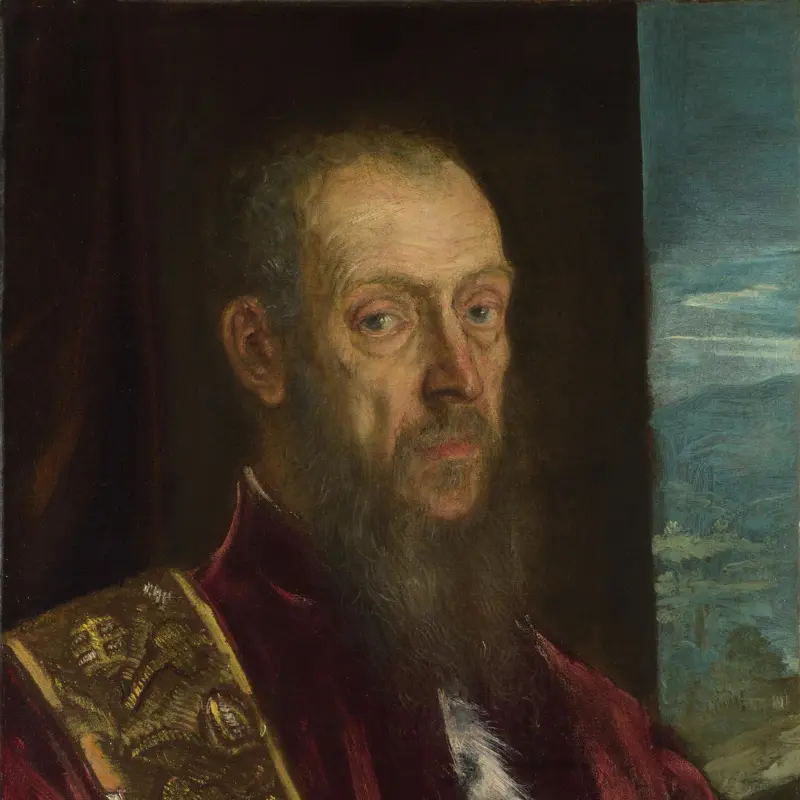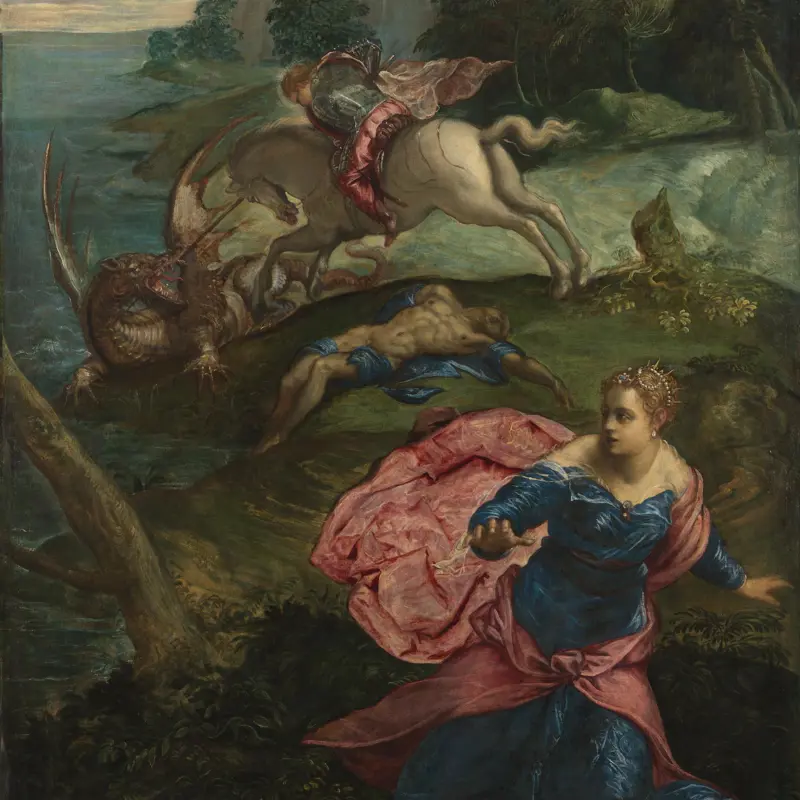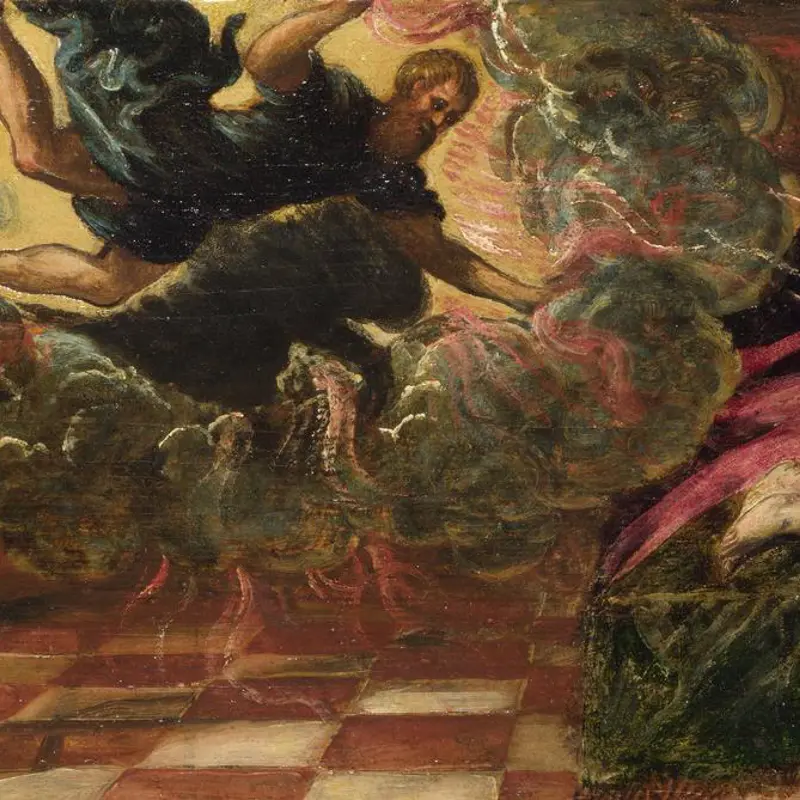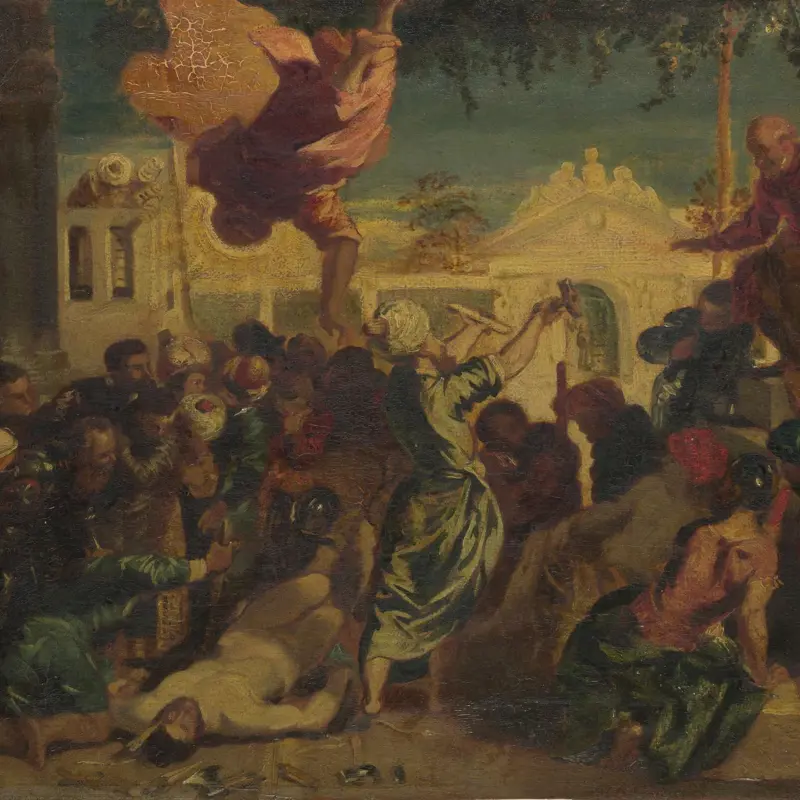Follower of Jacopo Tintoretto, 'Portrait of a Woman (perhaps Pellegrina Morosini Capello)', 1550 - 1559
About the work
Overview
This portrait was purchased in 1855 from the Capello family, and is said to represent Pellegrina Morosini, who was from one of the oldest and most important families of sixteenth-century Venice. Pellegrina married Bartolomeo Capello in 1544 and had two children, Bianca and Vettor. She died some time before 1559. Pellegrina’s daughter, Bianca Capello, was the subject of scandal, as the mistress then wife of Francesco I de’ Medici, Grand Duke of Tuscany.
The woman turns her eyes to meet ours with a confident, questioning look. A single parapet is often used to define space in Venetian portraits, such as Titian’s Portrait of a Lady (‘La Schiavona’) in the National Gallery, but the two stone ledges in this portrait are an unusual feature. The painting is similar in appearance and technique to two portraits of women (Kunsthistorisches Museum, Vienna and the Museum of Fine Arts, Budapest) considered to be early works by Tintoretto. It was probably painted by a follower of Tintoretto, perhaps from the mainland, in the early 1550s.
Key facts
Details
- Full title
- Portrait of a Woman (perhaps Pellegrina Morosini Capello)
- Artist
- Follower of Jacopo Tintoretto
- Artist dates
- about 1518 - 1594
- Date made
- 1550 - 1559
- Medium and support
- oil on canvas
- Dimensions
- 98.8 × 80.7 cm
- Acquisition credit
- Bought, 1855
- Inventory number
- NG2161
- Location
- Not on display
- Collection
- Main Collection
Bibliography
-
1959Gould, Cecil, National Gallery Catalogues: The Sixteenth Century Venetian School, London 1959
-
1987Gould, Cecil, National Gallery Catalogues: The Sixteenth Century Italian Schools, London 1987
-
2001
C. Baker and T. Henry, The National Gallery: Complete Illustrated Catalogue, London 2001
-
2008Penny, Nicholas, National Gallery Catalogues: The Sixteenth Century Italian Paintings, 2, Venice, 1540-1600, London 2008
About this record
If you know more about this work or have spotted an error, please contact us. Please note that exhibition histories are listed from 2009 onwards. Bibliographies may not be complete; more comprehensive information is available in the National Gallery Library.

